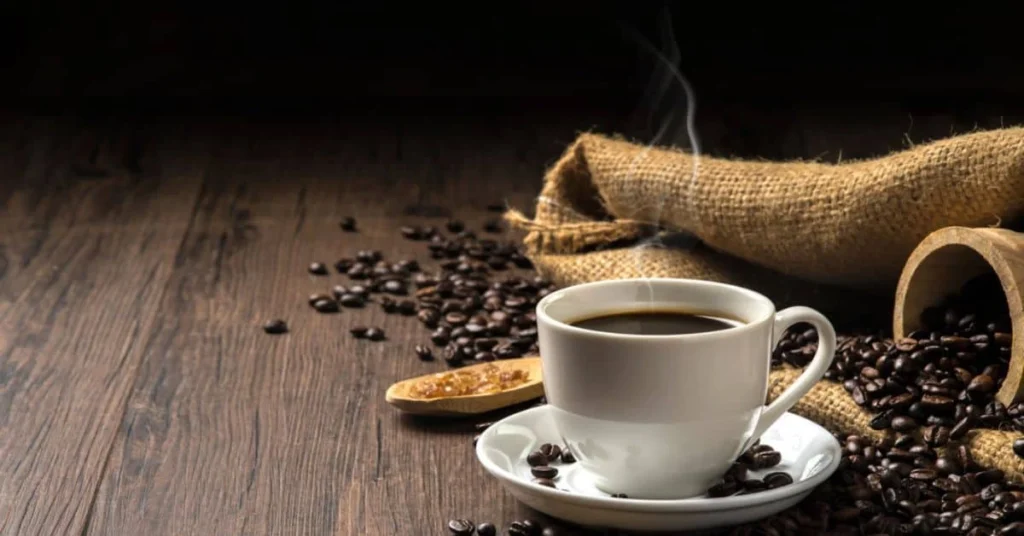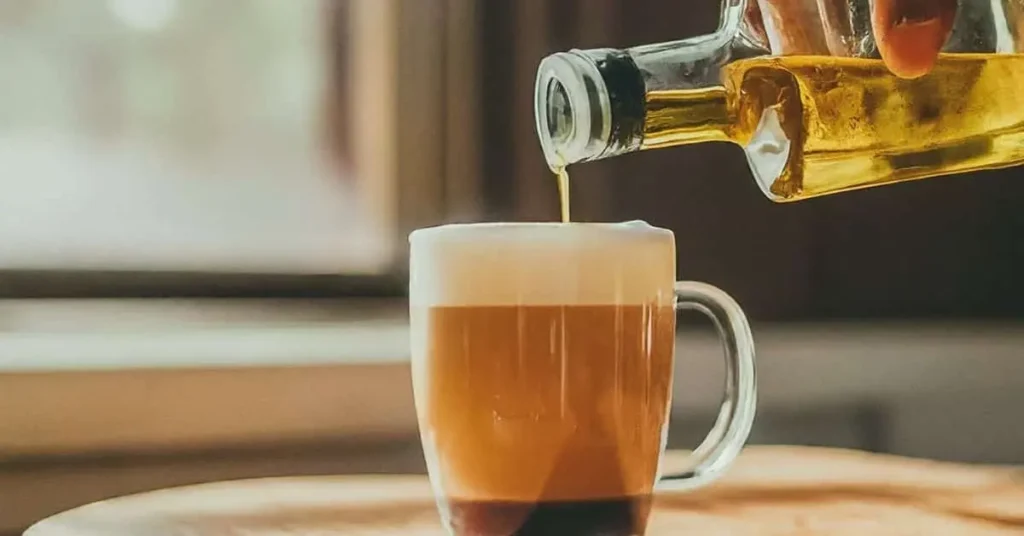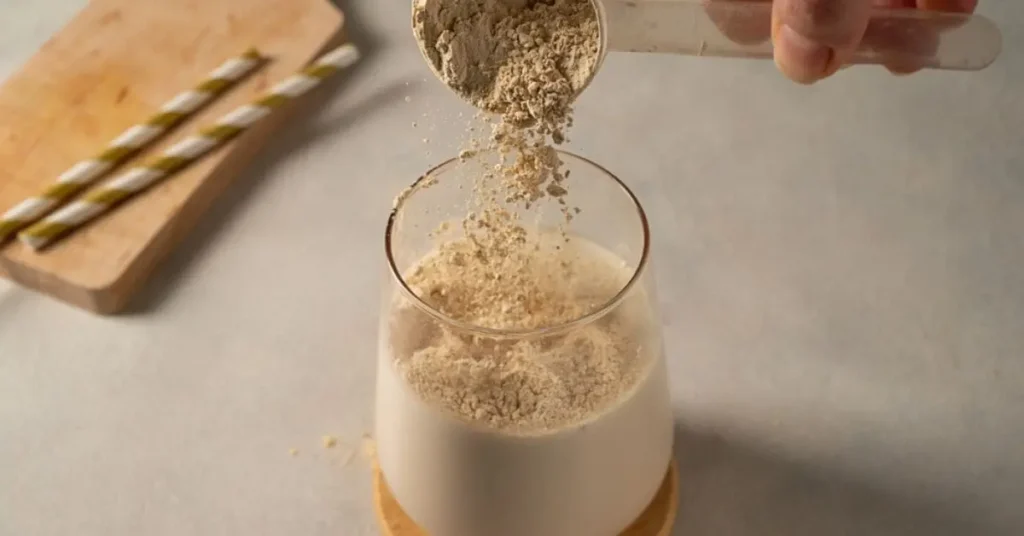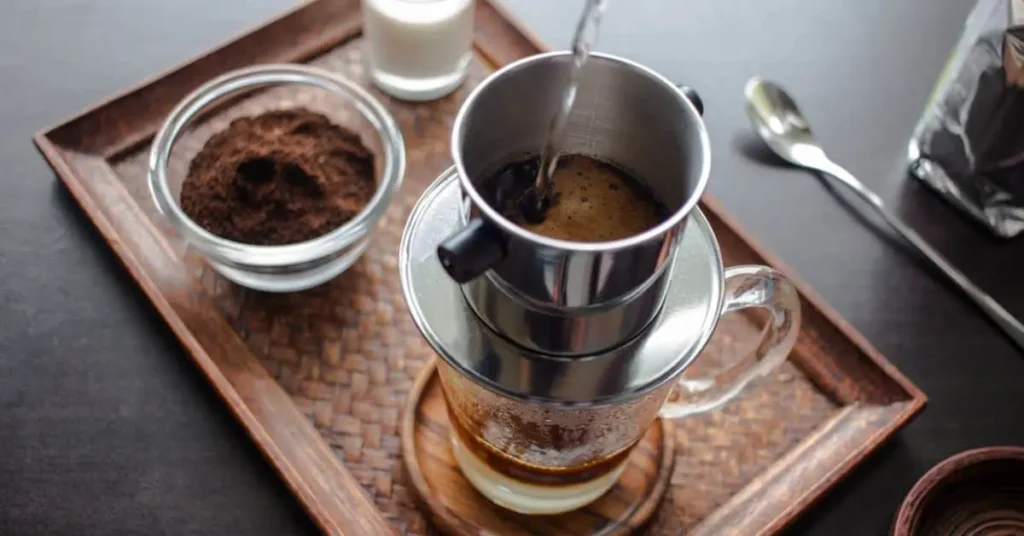Are you tired of the same old drip coffee and looking to explore new horizons of flavor? As coffee enthusiasts, we understand the importance of selecting the right brewing method to extract the best possible taste from those precious coffee beans. With a myriad of options available, it can be overwhelming to decide which brewing method suits your preferences.
In this article, we will delve into the world of alternative brewing methods and compare two popular contenders: siphon coffee and French press. These methods offer unique experiences and flavors that can elevate your coffee journey to new heights. So, let’s embark on this flavorful exploration and discover which brewing method resonates with your taste buds.
As the captivating aromas of freshly brewed coffee fill the air, it’s evident that alternative brewing methods are gaining popularity among coffee lovers. Gone are the days when a simple drip machine sufficed. Today, the discerning coffee drinker seeks a brewing process that goes beyond convenience, embracing the art and science of extracting the perfect cup.
Understanding the intricacies of the siphon coffee brewing method is like unraveling the secrets of a mad scientist’s laboratory. With its mesmerizing glass chambers, cloth filters, and delicate balance between heat and vacuum pressure, the siphon brewer produces a clean, bright, and aromatic cup of coffee that is often described as a “pure sensory delight.”
On the other hand, the French press, with its timeless and rustic charm, offers a more robust and full-bodied coffee experience. Its simplicity in design and ease of use have made it a staple in countless households. The French press method extracts the coffee’s oils and sediments, resulting in a rich and bold brew that captivates with its deep flavors and velvety texture.
Throughout this article, we will examine the flavor profiles, brewing processes, advantages, and potential drawbacks of both siphon coffee and French press. We will unravel the secrets behind each method’s unique characteristics and help you make an informed decision when choosing the brewing method that suits your individual preferences.
So, grab your favorite mug, and let’s embark on this exciting journey through the world of siphon coffee and French press. Get ready to tantalize your taste buds and unlock the hidden flavors that await you with each sip.
Stay tuned for the following sections, where we will delve deeper into the siphon coffee brewing method, explore the French press technique, and compare the flavor profiles and brewing processes of these two captivating brewing methods.
Remember, in the quest for the perfect cup of coffee, the journey is just as rewarding as the destination. Let’s uncover the nuances and intricacies that lie within each method, and may your coffee adventures be filled with discovery, enjoyment, and, of course, the perfect brew.
Understanding the Siphon Coffee Brewing Method
Picture this: a mesmerizing chemistry lab where coffee meets science and art. Welcome to the world of siphon coffee brewing, a method that combines elegance and precision to create a truly exceptional cup of coffee.
The siphon coffee brewing process is a spectacle to behold. It consists of two glass chambers, one stacked on top of the other, connected by a tube. The bottom chamber is filled with water, while the upper chamber holds the coffee grounds. The magic happens when heat is applied to the bottom chamber, creating a pressure difference that forces the water to rise into the upper chamber, where it mixes with the coffee grounds. As the heat is removed, a vacuum is formed, pulling the brewed coffee back down through a filter into the lower chamber, ready to be poured and savored.
What sets siphon coffee apart is the unique combination of immersion and vacuum extraction. This process allows for a delicate extraction, resulting in a clean and crisp cup of coffee that highlights the intricate flavors and aromas of the beans. The use of a cloth filter further enhances the clarity, ensuring that no sediment or oils pass through, resulting in a pure and refined brew.
The siphon method is celebrated for its ability to extract the full spectrum of flavors from the coffee beans. The combination of immersion and vacuum ensures even extraction, drawing out the nuances and subtleties that make each coffee varietal unique. From vibrant floral notes to bright citrusy acidity or deep chocolate undertones, the siphon brewing method has the power to showcase the full potential of your chosen beans.
To achieve the best results with a siphon coffee maker, precision is key. The temperature of the water, the grind size of the beans, and the brewing time must be carefully controlled. Optimal water temperature is around 195 to 205 degrees Fahrenheit (90 to 96 degrees Celsius), ensuring proper extraction without scorching the coffee. The grind size should be medium-fine, similar to the texture of granulated sugar, allowing for a balanced extraction. As for brewing time, a typical siphon brew takes around 3 to 4 minutes, but it can be adjusted to suit personal taste preferences.
In addition to the exceptional flavor profile, siphon coffee brewing offers a visual spectacle that adds to the overall experience. The mesmerizing process of water rising, coffee swirling, and the rich aroma filling the air creates a sense of anticipation and appreciation. It’s an opportunity to immerse yourself in the artistry of coffee brewing and engage all your senses in the journey from beans to cup.
While siphon coffee brewing may seem complex, with a little practice and experimentation, it can become a rewarding part of your coffee routine. The precision and attention to detail required may appeal to those who enjoy the process of crafting the perfect cup. So, if you’re looking for a brewing method that combines scientific precision with captivating theater, the siphon coffee brewing method might be your perfect match.
Stay tuned for the next section, where we’ll explore the French press brewing method, comparing its unique qualities and flavor profile with that of the siphon coffee. Get ready to uncover a whole new world of coffee brewing possibilities.
Exploring the French Press Brewing Method
The French press, also known as a press pot or plunger pot, is a straightforward yet effective way to extract the full-bodied goodness from your coffee beans. Its design is elegant in its simplicity: a cylindrical glass or stainless steel carafe, a plunger with a mesh filter, and a lid. With just a few steps, you can create a brew that boasts a robust flavor profile and a velvety mouthfeel.
To start the French press brewing process, you add coarsely ground coffee to the carafe, typically using a ratio of one part coffee to 15 parts water. This ratio can be adjusted to suit your personal taste preferences. Then, you pour hot water over the grounds and let them steep for a few minutes. The steeping time varies depending on the desired strength of your brew but usually ranges between 3 to 5 minutes. Once the steeping is complete, you press the plunger down slowly, separating the grounds from the brewed coffee and trapping them at the bottom.
One of the distinguishing features of the French press is its ability to extract the natural oils and fine sediments from the coffee beans. The metal mesh filter allows these elements to pass through, resulting in a coffee with a fuller body and more pronounced flavors. This gives the brew a certain richness and depth that appeals to those seeking a more indulgent and textured cup.
French press coffee is often praised for its full-bodied mouthfeel and its ability to capture the robust characteristics of the coffee beans. The extended contact time between the coffee and water during the steeping process enhances the extraction of flavors, bringing out the coffee’s natural oils and essences. This leads to a brew that is bold, earthy, and sometimes even slightly nutty or chocolaty. Each sip provides a satisfying, tongue-coating experience that lingers on the palate.
One of the advantages of the French press brewing method is its accessibility and simplicity. It requires no intricate equipment or complex techniques, making it a popular choice for both casual coffee enthusiasts and seasoned connoisseurs. With a French press, you have control over the brewing variables, such as water temperature, steeping time, and coffee-to-water ratio, allowing you to fine-tune your brew to perfection.
It’s worth noting that French press coffee may have a bit more sediment compared to other brewing methods. While this sediment adds to the unique characteristics of the brew, some people prefer a cleaner cup without any residue. To minimize sediment, consider using a coarser grind size or opting for a French press with a finer mesh filter.
The French press brewing method is not just about the end result—it’s also about the ritual and experience it brings. The act of plunging down the filter, releasing the captivating aroma of freshly brewed coffee, is a moment of satisfaction. It’s an invitation to slow down, savor the process, and appreciate the art of brewing coffee.
Flavor Profile Comparison
Ah, the moment of truth—the taste test. When it comes to savoring a cup of coffee, the flavor profile is at the heart of the experience. Now, let’s delve into the intriguing world of flavor and compare the distinct characteristics of siphon coffee and French press.
Siphon Coffee Flavor Profile
Siphon coffee, with its meticulous brewing process, offers a flavor profile that is often described as clean, crisp, and delightfully complex. The clarity of flavors achieved through the siphon method is a result of the precise control over extraction, allowing the true essence of the coffee beans to shine.
The siphon brewing method highlights the nuanced and delicate flavors of the coffee. From bright and vibrant floral notes to subtle hints of fruitiness or gentle acidity, each sip offers a refined experience for the taste buds. The cleanliness of the brew ensures that no overpowering or muddled flavors mask the subtleties that make each coffee bean unique.
Moreover, siphon coffee showcases a remarkable clarity, allowing you to discern the individual flavor notes with ease. It’s like listening to a symphony where every instrument has its own moment to shine, creating a harmonious and memorable composition on your palate.
French Press Coffee Flavor Profile
In contrast to the refined elegance of siphon coffee, French press brews offer a robust and full-bodied flavor profile that appeals to those seeking a bolder coffee experience. This brewing method extracts the oils and sediments from the coffee beans, resulting in a rich and indulgent cup.
French press coffee captivates with its deep flavors and velvety texture. The extended steeping time allows the water to extract a range of intense characteristics from the coffee grounds. The result is a brew that is often described as earthy, rich, and sometimes even having hints of nuttiness or chocolate.
The immersion brewing process in the French press ensures that the flavors are extracted more fully, resulting in a brew that has a certain weight and presence on the palate. It envelops your taste buds, providing a satisfying and lingering mouthfeel that can be quite addictive.
Choosing Your Flavor Adventure
When it comes to choosing between siphon coffee and French press, the flavor profile plays a crucial role. It ultimately boils down to personal taste preferences and the experience you seek from your coffee.
If you appreciate a clean, crisp, and nuanced coffee experience that highlights the intricate flavors of the beans, siphon coffee might be your cup of tea—err, coffee. The siphon brewing method offers a refined and sophisticated flavor profile that lets the unique characteristics of the coffee shine through.
On the other hand, if you crave a bold, full-bodied, and indulgent brew that envelops your senses, the French press might be your ideal companion. Its ability to extract the oils and sediments results in a robust flavor profile that resonates with those who enjoy a more intense coffee experience.
The choice between siphon coffee and French press depends on your personal taste preferences and the flavor adventure you wish to embark on. Both methods offer distinctive and captivating flavor profiles that can elevate your coffee journey to new heights.
In the next section, we will explore the brewing processes of siphon coffee and French press, providing step-by-step guides to help you bring these flavor profiles to life in your own home. Get ready to unleash your inner barista and immerse yourself in the art of brewing.
Brewing Process Comparison
Now that we have explored the flavor profiles of siphon coffee and French press, let’s dive into the brewing processes of these two captivating methods. Understanding the step-by-step procedures will empower you to bring these flavor profiles to life in your own home.
Siphon Coffee Brewing Process
The siphon coffee brewing process is an intricate dance between science and art. Let’s break it down into simple steps:
Set up your siphon brewer: Place the lower chamber on a heat source and attach the upper chamber securely on top.
Add water: Fill the lower chamber with filtered water, leaving some space at the top to prevent overflowing during the brewing process.
Heat the water: Apply heat to the lower chamber until the water reaches an optimal temperature of around 195 to 205 degrees Fahrenheit (90 to 96 degrees Celsius).
Grind your coffee beans: While the water is heating, grind your coffee beans to a medium-fine consistency, similar to granulated sugar.
Assemble the siphon: Once the water is heated, place the upper chamber on top of the lower chamber, creating a tight seal.
Add coffee grounds: Carefully pour the ground coffee into the upper chamber, ensuring an even distribution.
Begin the brewing process: Once the coffee grounds are added, stir gently to ensure proper saturation. Allow the coffee to steep for about a minute.
Apply heat and create a vacuum: After the steeping period, carefully apply heat to the lower chamber while holding the upper chamber. The heated water will rise into the upper chamber, commencing the brewing process.
Brew extraction: As the heat is removed, a vacuum is formed, pulling the brewed coffee back down through the filter into the lower chamber.
Serve and enjoy: Once the brewing process is complete, carefully separate the upper chamber from the lower chamber and pour the brewed coffee into your favorite cup or mug. Savor the delightful aromas and flavors that the siphon brewing method has unlocked.
French Press Brewing Process
Compared to the siphon method, the French press brewing process is delightfully straightforward. Let’s take a look at the step-by-step procedure:
Heat water: Begin by heating filtered water to a temperature of around 195 to 205 degrees Fahrenheit (90 to 96 degrees Celsius).
Grind your coffee beans: While the water is heating, grind your coffee beans to a coarse consistency, resembling sea salt.
Add coffee grounds: Transfer the ground coffee to the French press carafe. Use a ratio of one part coffee to 15 parts water, or adjust according to your taste preferences.
Pour water and stir: Slowly pour the heated water over the coffee grounds, ensuring they are evenly saturated. Give it a gentle stir to promote extraction.
Steep: Place the lid on the French press, but do not press down the plunger. Allow the coffee to steep for about 3 to 5 minutes, or adjust the steeping time to achieve your desired strength.
Press and separate: After the desired steeping time, slowly press the plunger down, separating the brewed coffee from the grounds. This action traps the sediments at the bottom, preventing them from reaching your cup.
Serve and indulge: Pour the brewed coffee into your favorite mug or cup. Breathe in the inviting aroma, and take pleasure in the rich and full-bodied flavors that the French press has bestowed upon your brew.
The Journey Continues
The brewing processes of siphon coffee and French press offer unique rituals and experiences. Whether you prefer the intricate elegance of siphon brewing or
Advantages and Disadvantages
As we weigh the pros and cons of different brewing methods, let’s examine the advantages and disadvantages of both siphon coffee and French press. Each method has its own unique characteristics that may align with your preferences and brewing style.
Siphon Coffee:
1. Advantages
Delicate flavors: Siphon coffee extraction brings out the nuanced and delicate flavors of the coffee beans, resulting in a clean and crisp brew.
Aesthetic appeal: The mesmerizing visual spectacle of the siphon brewing process adds an element of theater and elegance to your coffee ritual.
Consistent temperature control: The vacuum brewing system of the siphon maintains a steady temperature throughout the process, ensuring optimal extraction.
Captivating aromas: The siphon method enhances the aromatic experience, as the coffee’s enticing aromas are fully released during the brewing process.
2. Disadvantages
Complexity: Siphon brewing requires attention to detail and a level of skill to achieve consistent results. The setup and brewing process may seem intimidating for beginners.
Equipment investment: Siphon brewers can be more expensive compared to other brewing methods, requiring an initial investment to enjoy the siphon coffee experience.
French Press
1. Advantages
Full-bodied flavors: French press brewing extracts the oils and sediments from the coffee beans, resulting in a rich and robust cup with a full-bodied mouthfeel.
Simplicity: The French press is a straightforward and user-friendly brewing method, making it accessible to coffee enthusiasts of all levels.
Customizable brew: The French press allows for easy adjustment of brewing variables, such as water temperature, steeping time, and coffee-to-water ratio, giving you control over the final taste.
Affordable and widely available: French press brewers are affordable and can be found in most home and kitchen stores, making it a convenient option for home brewing.
2. Disadvantages
Sediment in the cup: The French press may result in a slightly higher amount of sediment in the final cup compared to other methods, which some drinkers may find undesirable.
Potential for over-extraction: Without careful attention to brewing time and grind size, the French press can lead to over-extraction and a bitter taste in the coffee.
Limited clarity of flavors: The French press’s immersion brewing method may not capture the subtle nuances of flavors compared to methods like pour-over or siphon.
By considering the advantages and disadvantages of each brewing method, you can make an informed decision based on your preferences, lifestyle, and desired coffee experience. The choice between siphon coffee and French press ultimately boils down to the flavors, brewing process, and overall satisfaction that resonate with you.
In the next section, we will explore some additional factors to consider when selecting a brewing method, including convenience, versatility, and the equipment required. Stay tuned as we dive deeper into the world of coffee brewing.
Choosing the Right Brewing Method
Now that we have explored the intricacies of siphon coffee and French press brewing methods, it’s time to consider the factors that can help you determine the right brewing method for your coffee journey. Let’s delve into some essential considerations that can guide your decision-making process.
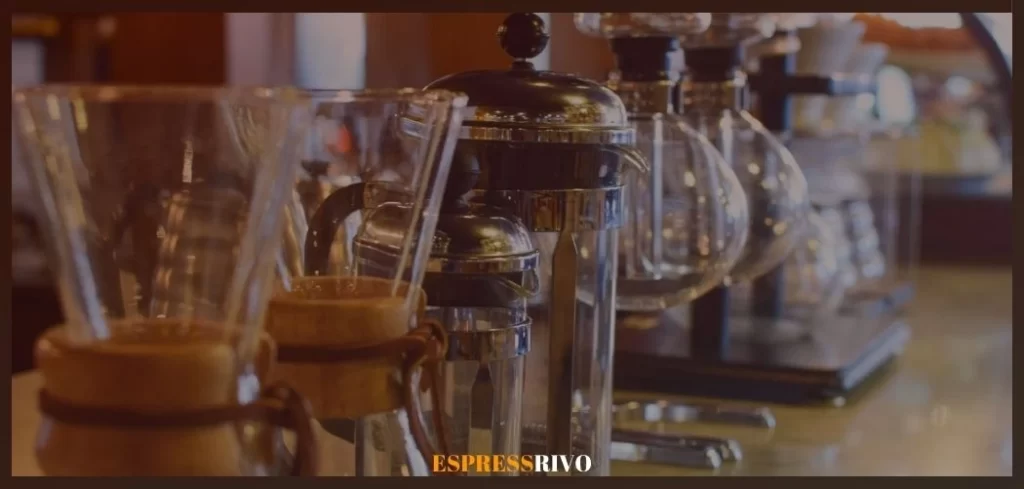
Flavor Preference
The foundation of your choice lies in your personal flavor preferences. Reflect on the characteristics you seek in a cup of coffee. Do you value the delicate and nuanced flavors that siphon coffee brings forth, or do you prefer the bold and full-bodied profile of French press coffee? Understanding your flavor preferences will help steer you towards the method that aligns with your taste buds.
Brewing Experience
Consider your comfort level and the brewing experience you desire. Siphon coffee brewing requires precision, attention to detail, and a willingness to embrace a more involved process. If you enjoy the artistry and theater of brewing, the siphon method can offer a captivating experience. On the other hand, if you prefer simplicity and ease of use, the French press might be the perfect fit, allowing you to enjoy a satisfying cup without extensive preparation.
Convenience and Time
Evaluate the role of convenience and time in your coffee routine. Siphon brewing can be time-consuming, requiring additional steps and setup. If you have the luxury of time and appreciate the ritualistic aspect of brewing, siphon coffee can be a rewarding choice. Conversely, the French press offers a quicker brewing process, making it an excellent option for busy mornings or when you crave a no-fuss brewing method.
Versatility and Adaptability
Consider the versatility of each brewing method. The French press allows you to experiment with various coffee beans, grind sizes, water temperatures, and steeping times, offering flexibility and room for exploration. Siphon brewing, while more precise, may have a narrower range of adaptability. If you enjoy experimenting and tailoring your brew to specific beans or flavor profiles, the French press might be your canvas for creativity.
Equipment and Budget
Take into account the equipment required and your budget. Siphon brewing necessitates the purchase of a siphon brewer, which can be a higher upfront investment. French press brewers, on the other hand, are more affordable and readily available. Consider the long-term costs, maintenance, and storage requirements of each method to ensure they align with your budget and available space.
Coffee Moments and Occasions
Lastly, consider the context in which you enjoy your coffee. Siphon brewing can add a touch of sophistication and elegance to special occasions or when you want to savor a sensory experience. French press brewing, with its simplicity and accessibility, is perfect for everyday enjoyment, lazy weekends, or casual gatherings with friends and family. Tailor your choice to the moments and atmospheres that define your coffee journey.
By evaluating these considerations, you can narrow down your options and select the brewing method that resonates with your preferences, lifestyle, and desired coffee experience. Remember, there is no definitive “right” choice—what matters most is the joy and satisfaction you derive from your cup of coffee.
In our final section, we will provide some additional tips and insights to enhance your coffee brewing adventure. Get ready to embark on a flavorful journey as we conclude our exploration of siphon coffee vs. French press.
Conclusion
In the realm of coffee brewing, the choice between siphon coffee and French press ultimately boils down to personal preferences and the coffee experience you seek. Both methods offer distinct flavors, brewing processes, and rituals that can elevate your coffee journey.
If you appreciate the delicate nuances, clean flavors, and captivating aromas, siphon coffee might be your perfect match. Embrace the artistry and precision of the siphon brewing method, knowing that it requires a bit more time, effort, and investment.
On the other hand, if you crave a rich, full-bodied cup with simplicity and convenience, the French press is an excellent choice. Enjoy the versatility, control, and accessibility that the French press offers, allowing you to customize your brew to your desired strength and taste.
Remember, there is no one-size-fits-all answer. Your choice should be based on your unique preferences, brewing experience, convenience, versatility, and budget. The most important aspect is to enjoy the process and the final cup of coffee that brings you joy and satisfaction.
To truly enhance your coffee brewing experience, experiment with different coffee beans, grind sizes, water temperatures, and brewing times. Keep a brewing journal to track your preferences and discoveries. Connect with fellow coffee enthusiasts to exchange tips, techniques, and recommendations.
Whether you choose the elegance of siphon coffee or the simplicity of the French press, both methods offer a delightful journey into the world of coffee flavors and aromas. Embrace the art and science of brewing, and savor every sip as you explore the endless possibilities within your cup.
Now, armed with knowledge and considerations, it’s time to embark on your own coffee brewing adventure. May your mornings be filled with the enticing aromas and flavors of your favorite brew, and may your coffee rituals become moments of bliss and rejuvenation.
Cheers to the pursuit of the perfect cup of coffee, and may your journey be as rich and flavorful as the beans you brew.
Ronsil
Meet Ronsil, the master barista behind EspressoRivo. With years of experience in the coffee industry, he brings a wealth of knowledge and passion to the table. As the owner of a successful coffee shop, Ronsil is a sought-after adviser in the field. His expertise and love for the craft shines through in every cup he serves. We are honored to have him as part of our team at EspressoRivo

